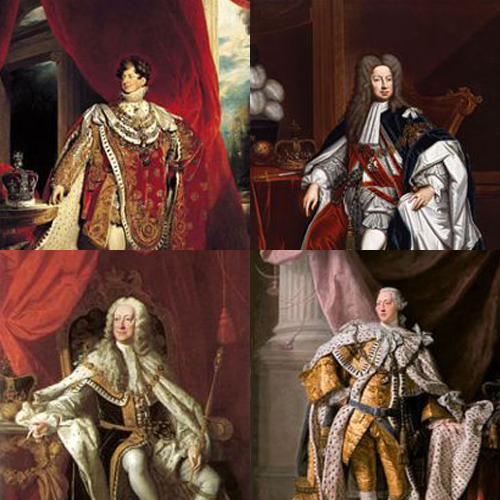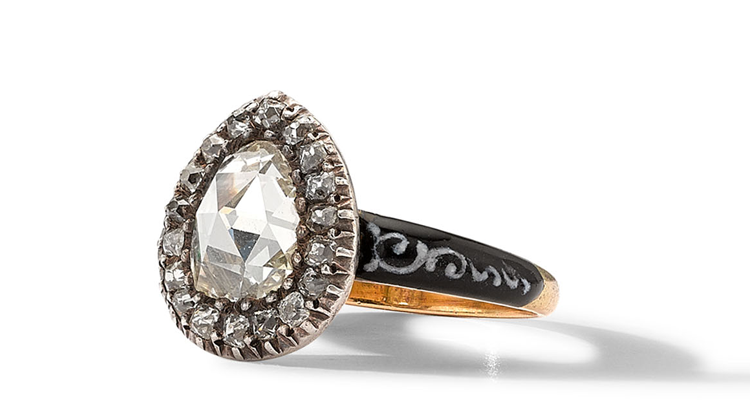The Georgian Era
An era of Mozart, revolution and Rococo. Georgian jewellery adorned famous collectors such as a Marie Antoinette and Catherine The Great.
Fine examples of early Georgian jewellery are extremely rare. During this dynamic era trends changed monthly; it was common for pieces that were considered out of date to be melted down and redesigned in a style more reflective of current trends. Due to a changing attitude, jewellery was no longer reserved for the aristocracy and it became more readily available through new manufacturing processes. Enthusiasm for social activities and a ‘laissez-faire’ approach to life drove a great desire for jewellery amongst the middle classes. Industrialisation contributed to the development of techniques, while global exploration made gems more available in Europe.
Following the revocation of the Edict of Nantes by French King, Louis XIV, a great number of the finest goldsmiths emigrated to England. They crafted pieces by hand using gold alloys in 18ct and higher, and silver. The pieces were highly labour intensive and, before the invention of the rolling mill, gold ingots had to be hammered by hand into sheets before the craftsman could even begin work. Complex techniques were used to shape gold into ornate filigree designs. Baroque and Rococo styles influenced the craftsmen and designers, with flowers, bows, hearts, crescents and leaves proving popular motifs. Neoclassical jewels of the 1760s were inspired by Greek and Roman design; laurel and grape leaves adorned pieces and ancient scenes were depicted on cameos. Later in the decade and following Napoleon’s Egyptian campaign, papyrus leaves and pyramids appeared in Georgian motifs.

Diamonds and gemstones were fashioned into rose, table, cabochon and briolette and old mine cuts. The old mine cut was the most popular diamond cut at this time and the term originated from the longstanding Brazilian and Indian diamond mines. Characterised by a rounded square shape, each diamond was hand cut, so they each had their own personality and charm. Diamond rivière necklaces were a popular choice for candlelit events of the evening, whilst coloured gems such as emerald and ruby, strands of beads and cameos were abundant in daytime jewellery. Many Georgian era pieces were interchangeable, important necklaces which could be adapted into a pair of earrings or a brooch were typical. A favourite ring motif of the period consisted of a larger central diamond or gem with a cluster of diamonds surrounding it, with enamel decorated shoulders.
Before the use of platinum in jewellery workshops, the development of silver topped gold by the innovative English jeweller, James Cox, in 1767 allowed gems and diamonds to be set in white metal as it was highly desirable. The gold backing eliminated the risk of oxidisation marks and constant cleaning that comes with using silver alone. Settings were most commonly closed-back and occasionally foiled to increase the brightness of the gems. Many of the techniques and styles from this important era have shaped and influenced the styles of today’s jewellery. While the original pieces remain highly desirable and collectable, their romantic charm is also everlasting.
Antique CLP Page
